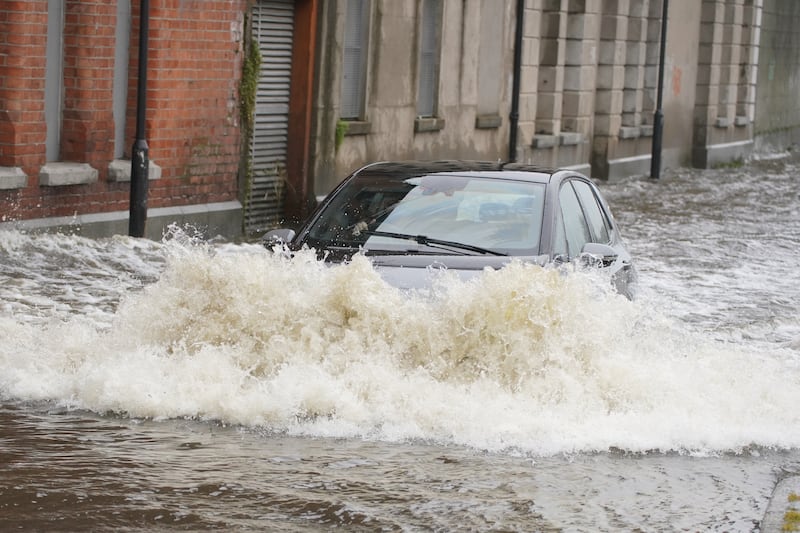The Newry Chamber of Commerce put a lot of effort in recent years into lobbying for badly needed investment in the city’s infrastructure, says the chamber’s president, Julie Gibbons.
Up to last week, it did so because the inadequacy of the city’s infrastructure was seen as a disincentive to private sector investment. But after massive rainfall this week led to the flooding of shops and businesses in the heart of the city, that view has altered.
“Now we see that, rather than it just being an impediment to growth, it is in fact catastrophic. And, of course, with climate change, there are going to continue to be events like this.”
On the border of Antrim and Down, Newry sits in a valley with the Clanrye river running through it. A canal that was opened in 1742 runs alongside the river in the centre of the city, where there is a small area of reclaimed land called Sugar Island that lies between the river and the canal, close to the Town Hall.
RM Block
[ Insurers know the answer to Irish flood cover problemOpens in new window ]
When unusually heavy rain started to fall last weekend, the water rushed down from the high ground around Newry into the river and the canal. Flood defence works put in place some years ago stopped the water in the river from flooding, but in the early hours of Monday morning, the canal burst its banks. Large amounts of water began to flood into Sugar Island and the business premises there. Among those hit was the McCartan Brothers menswear shop, which has been in business since 1959.
“We had just done a refurbishment, a new floor,” says Paul McCartan, who 25 years ago took over the running of the shop that was set up by his father and uncle. “We did that four weeks ago and you think, right, we are ready for Christmas, and then, bang, this hit us on Monday night.”
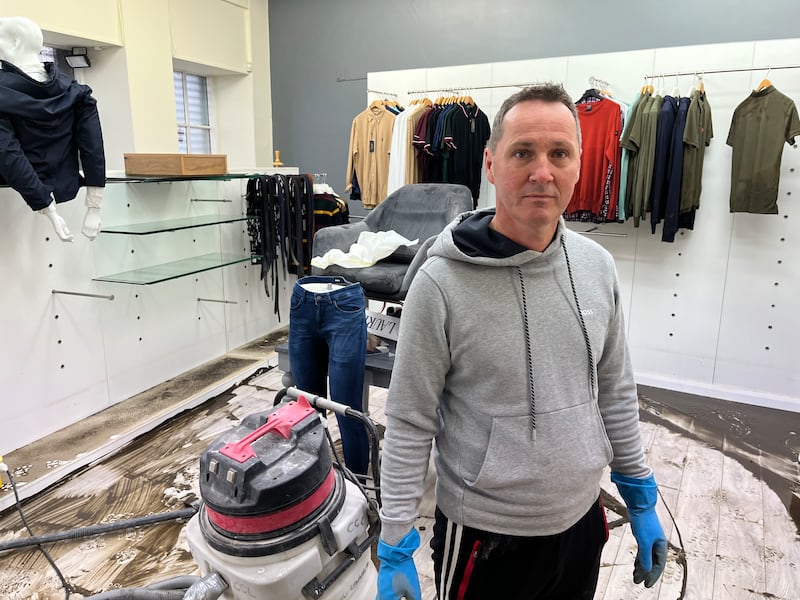
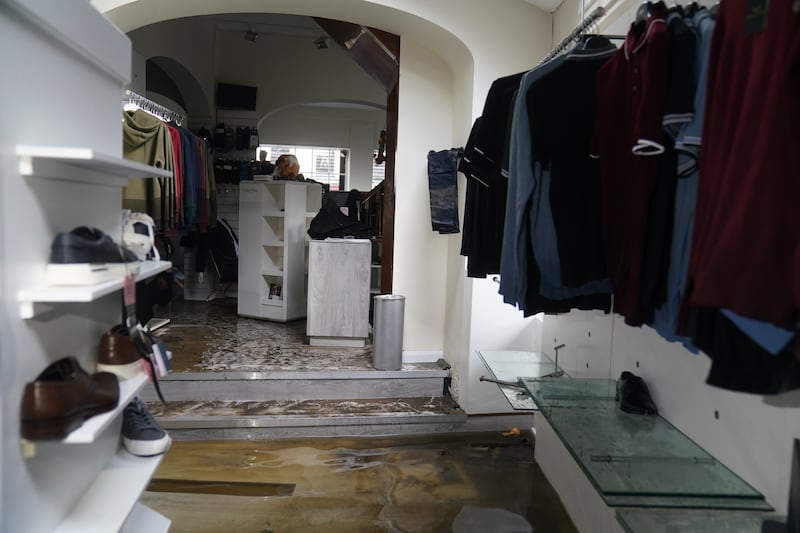
In McCartan Brothers the floodwater from the canal destroyed stock bought in for Christmas and undid the renovations so recently completed. On Thursday, McCartan was busy trying to clean out the mess and wondering whether he should move to a new premises for Christmas or try to get the Sugar Island shop repaired in time for the busy shopping season.
“Yesterday we looked at a few places that we might move to. But then people were saying don’t move, stay if you can, stay where you are, people will come to you.”
Like most of the businesses in central Newry, McCartan Brothers was not insured against flooding. “I would say two-thirds, three-quarters of businesses in Newry don’t [have flood insurance]. As soon as they hear you are in Newry, they are not interested.”
On Thursday, the State’s Government announced it was extending the support scheme available for people without insurance through no fault of their own and who suffered in the recent flooding in counties such as Cork and Waterford to those affected by this week’s weather events in Louth and Wexford and any other areas effected by flooding in the period October 24th to November 5th.
For McCartan, the support being put in place in the South is in stark contrast to the situation in Northern Ireland, where the lack of an Executive is seen as hampering efforts to get emergency support.
“Here we have no functioning government, so we are stuck,” says McCartan. “We are out in limbo.”
Without insurance and without any significant government support, he worries about the wisdom of putting more money into the Sugar Island premises. “The fear is, if I am able to go and redo the inside again, well, is this going to come knocking on our door again, is it going to happen again? That is a big concern. If I have to finance doing that again, and the same happens again, it would close my business. I couldn’t survive that.”
[ In pictures: Storm Babet brings heavy rain and flooding to IrelandOpens in new window ]
As well as being the president of the Newry Chamber of Commerce, Gibbons is the managing director of AbbeyAutoline, the largest insurance broker in the North.
“We work really hard for our clients, be they households or businesses, to get flood cover, but the truth is there are insurers who will just not cover it in our area,” she says.
The insurance companies and the underwriters look at the topography of an area, the size, nature and frequency of claims, and come to a decision as to the likelihood of flooding, she says. Getting flood insurance inside the BT 34 and BT 35 post codes is “an absolute nightmare”.
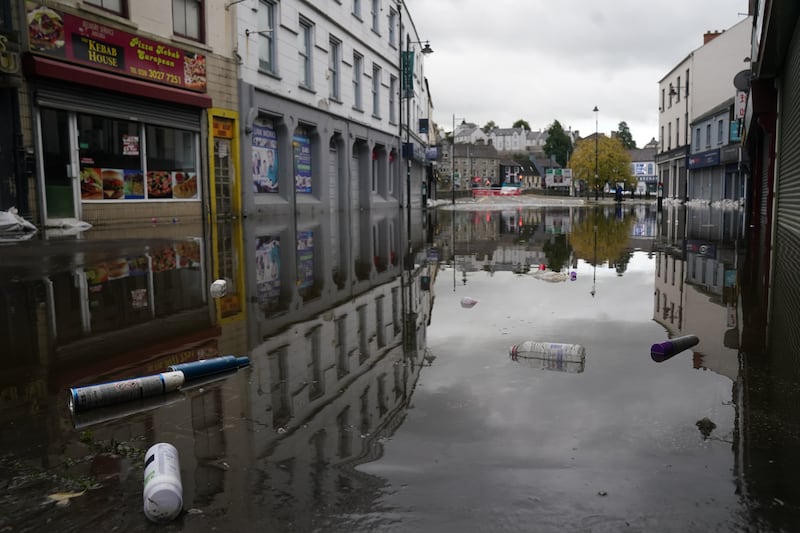
Gibbons successfully lobbied during the week for a visit from the head of the Civil Service in Northern Ireland, Jayne Brady, so she could see the level of damage in Newry for herself. But like McCartan, she believes the effort to get an adequate response to the crisis in Newry is being hampered by the absence of a sitting Northern Ireland Executive.
“You look at the response of the Irish Government to the businesses that were affected in Midleton and you think we should be able to do that, you know, for people who have really struggled and tried to get insurance but haven’t been able to.” The absence of an Executive is complicating the lobbying effort of the chamber. “You don’t know who is going to make the call on this. Who is going to make it happen. But we know that something has to happen.”
The chief executive of the Newry chamber, Michael Savage, is a former SDLP councillor and former chief executive of the party. He says budgets are already tight in Northern Ireland and the money to bail out the businesses affected by the flooding will have to come from London, as will the necessary funding for the huge infrastructural investment that is needed.
The money just has to be found, he says. “Some businesses are facing repair bills in excess of a hundred thousand pounds, and a lot will find it impossible to get that money. These businesses are at the centre of commercial trade in the city and we as a city can’t afford to lose them.”
A few miles south of Newry, the same intensive rain that caused such damage in Sugar Island resulted in devastation for a number of businesses situated beside the Flurry river, which marks the Border between Northern Ireland and the Republic alongside the main Belfast-Dublin road.
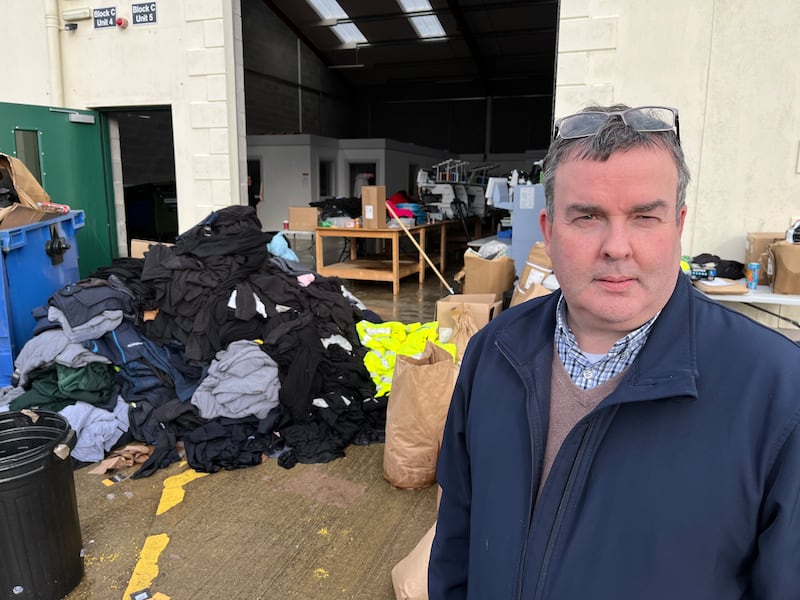
The Flurrybridge Enterprise Centre lies just to the north of the river. On Thursday, piles of soaked jackets and other clothing lay on the ground outside the business units occupied by Cuchulainn Workwear, which produces customised workwear for clients. Staff were mopping water off the floors of the units occupied by the business while the owner, Alan Murphy, surveyed the damage caused to the expensive machinery used by the business. Watermarks inside the units showed how high the floodwater had come. Coming back from the blow, Murphy says, will require “resilience”.
Further down in another unit there was more debris outside a precision engineering business operated by Thomas Elmore. Next door again was a unit occupied by Moo Music, a children’s music and movement business operated by Elmore’s wife, Linda. Both units were extensively flooded, and Thomas doesn’t know yet how much damage has been done to the expensive machinery that is key to the business he operates.
“This is devastating,” he says. “These are small businesses, two beside one another, one household with all the eggs in the one basket.”
Because of previous flooding at the centre – which did not affect his unit – he has no flooding insurance. “If we can get our machines going, we will be all right, we will weather this, but it is going to take a lot. It’s tough.” Others, he believes, may not make it.
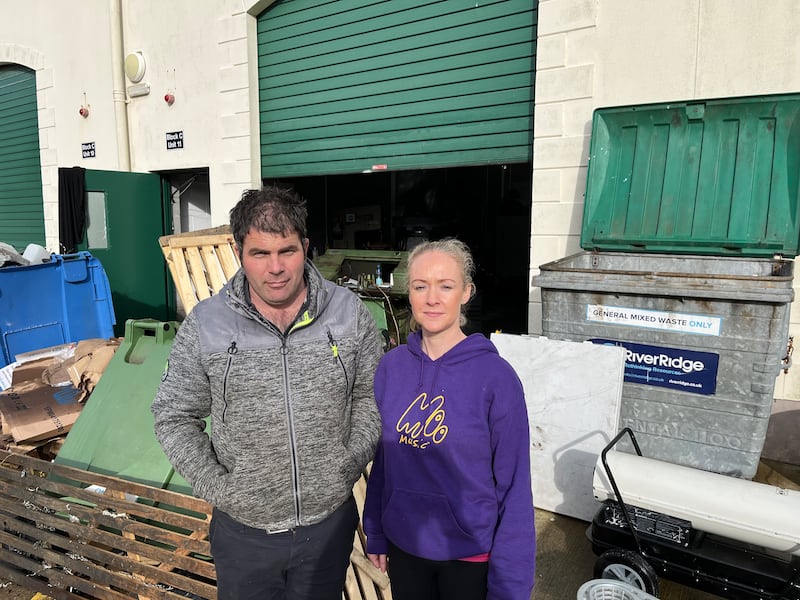
Massive rainfall that hit the Newry-Mourne area earlier this week has also been seen in the South, with figures released this week by Met Éireann showing record-breaking levels of inundation.
The Johnstown Castle weather station in Wexford recorded 265mm of rain in October, compared with 159mm in October last year. This year’s October rainfall compares with a long-term average (LTA) of 122mm for the station for October, based on rainfall between 1981 and 2010.
For the station at Roches Point, Co Cork, the October figure for this year of 242mm compares with last year’s 175mm and an LTA of 108mm. For Dublin Airport, the relevant figures are 125mm, 106mm and 79mm.
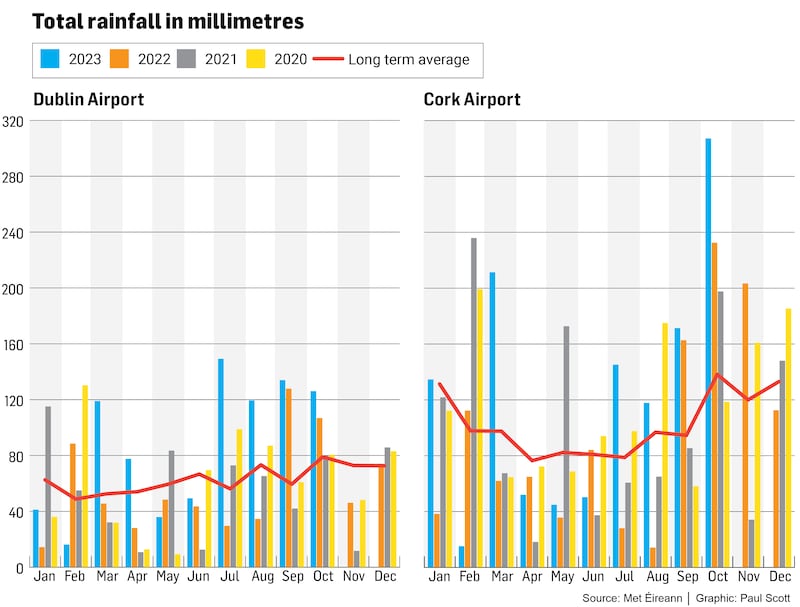
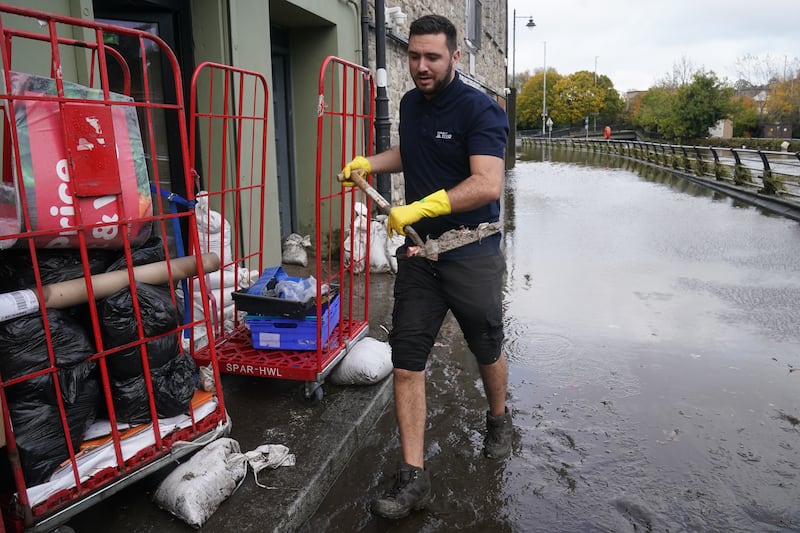
Even with the level of Government support that is available south of the Border, flooding brings great financial costs, says solicitor Ken Murray, whose premises on Oliver Plunkett Place, Midleton, was badly damaged in the October 18th flood. “I’ll be availing of the Government scheme, but I won’t be going back.”
Murray owns two adjacent buildings that he used for his solicitor’s practice, and he plans to use the Government money to refurbish them and then put them on the market, even though he believes he will now get a lower price than he would have prior to the flood.
“I am facing a fairly big financial hit, but you have to face your problems one by one.”
There are still very many people in Midleton living upstairs in their houses because of flood damage to the ground floor. Others have seen their cars washed away. A lot of businesses will struggle to get back up and running. “I’m very, very lucky,” he says. “I can start again.” There was a “sugar rush of adrenaline” during the flood and its immediate aftermath. “But it’s going to be a long, slow slog back.”
